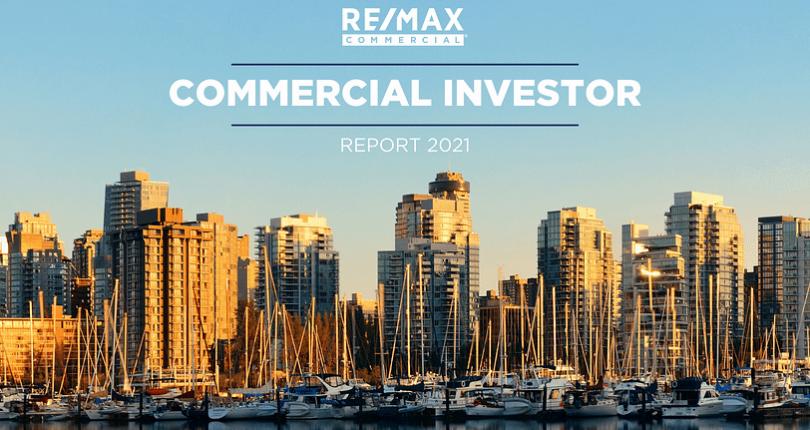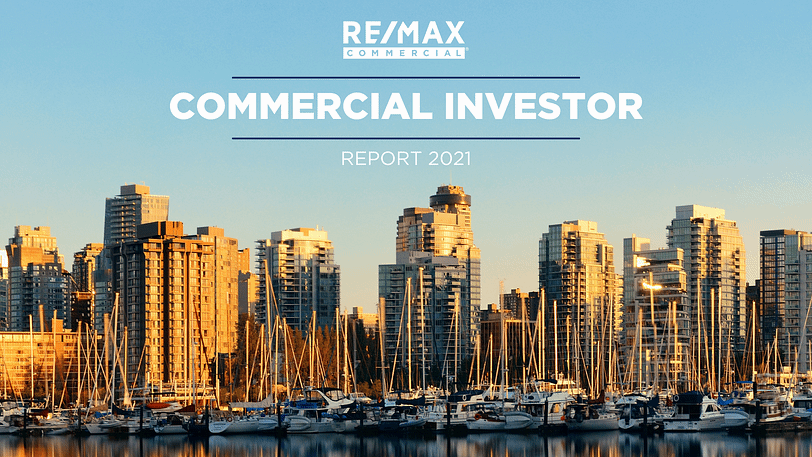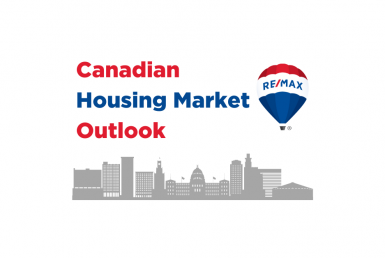Commercial Investor Report 2021

Resilient commercial real estate markets in Western Canada expected to rebound in latter half of 2021, says RE/MAX
Industrial and multi-unit residential asset classes to lead the way
Kelowna, BC (February 25, 2021) — While endless challenges faced commercial real estate markets in 2020, investors and end users in Western Canada showed incredible resilience in their ability to both adapt to changing conditions and position themselves for the future, according to a report released today by RE/MAX of Western Canada.
The RE/MAX Commercial Real Estate Report, highlighting trends and developments in seven major centres in Western Canada, found that institutional investors and private equity played a substantial role in almost every market in 2020, fuelling demand for multi-unit residential, industrial product, and office buildings while end users and smaller investors were strong in the industrial and, to a lesser extent, retail sectors. Industrial was the top performer from Vancouver to Winnipeg, driven by increased demand for warehouse and fulfillment space from multi-national companies such as Amazon and FedEx, while demand for multi-unit residential remained consistent, with higher CAP rates and lower values attracting investors in markets like Edmonton and Calgary. Farmland rounded out the top three sectors, with robust demand in Saskatchewan sparking strong sales and upward pressure on values.
“Despite a strong start to 2020 in virtually all asset classes across Western Canada, the pandemic shook the very foundation of the commercial market, and ultimately altered the playing field,” says Elton Ash, Regional Executive Vice President, RE/MAX of Western Canada. “Industrial captured the spotlight in the aftermath as e-commerce sales exploded across the country – prompting even greater demand — while the retail and office sectors struggled with lockdowns and safety measures.”
Closure of bricks and mortar during lockdown and the acceleration of e-commerce placed retail tenants behind the proverbial eight ball in 2020. Smaller retailers used the opportunity to invest in their future by purchasing smaller storefront locations, especially in high-traffic areas – with equity gains buffering any downturn in sales. Others looked to upgrade their online presence and augment with a reduced physical footprint, and if need be, industrial space for warehousing and distribution.
“The country’s largest landlords were able to evaluate and pivot with some success in 2020,” explains Ash. “Changing up the tenant mix has been one option exercised by landlords over the past year, while redevelopment is another, with some malls owners planning future multi-unit residential development on their properties. Others, such as the Orchard Park Mall in Kelowna, are using vacated space to expand their parking capacity. Conversion of retail vacancies to industrial space is also likely in the future, with large companies such as Brookfield already pushing forward with retail conversion to distribution models within their US portfolio. Given the movement underway in the US, it’s only a matter of time before we see this approach mirrored in Canada.”
While restaurants were hard hit by the pandemic, drive through locations emerged as 2020’s perfect business model — no touch, no contact, just tap and go. Demand for this product has surged in Saskatoon, Kelowna, and Calgary, and is expected to continue to experience strong demand in the year ahead.
Lockdowns and uncertainty contributed to negative absorption and higher vacancies in the commercial office sector throughout Western Canada in 2020, although year-over-year dollar volumes in some markets indicate the sale of larger properties. Institutional investors in Calgary accounted for 48 per cent of sales volumes while private equity represented 24 per cent in the office sector last year. With CAP rates rising to their highest levels in recent years at 10.1 per cent, according to CoStar’s Office Capital Markets Report, the growing presence of institutional investors and private equity in Calgary suggests the market is at or near bottom.
“Rebounding global demand for primary energy should help bolster economic performance, as well as demand for commercial real estate, in Alberta in the second half of 2021,” explains Ash. “In the interim, we could see out-of-province institutional investors walk-away with some of the city’s most coveted assets.”
Major drivers identified for the upswing in demand in the year ahead include historically low interest rates and strong economic recovery. The Bank of Canada (BOC) has indicated that it intends to keep overnight interest rates at 0.25 per cent and has predicted a strong second quarter rebound with “consumption forecast to gain strength as parts of the economy reopen and confidences improves, and exports and business investment is buoyed by rising foreign demand.” The BOC has projected GDP growth at four per cent in Canada in 2021.
Limited inventory, shortage of available zoned land, and strong demand overall have made industrial real estate the cash cow of 2020. Vacancies remain low for industrial product, with Vancouver posting the tightest rate at under 1.5 per cent, and rental rates climbing 10 per cent year-over-year. Large multinational companies have been behind the push as they gear up efforts to support a rapidly expanding e-commerce industry. Smaller investors have also been active, as the appetite for income properties in industrial areas that serve strong supply chains and essential services increases in strength. Diversification of smaller portfolios is underway as investors choose to supplement their residential multi-unit residential holdings with industrial product, and to a lesser extent, office/retail.
Demand for farmland in Saskatchewan continued unabated in 2020 as Alberta’s Hutterite Colonies sought to expand farming operations. The trend was highlighted by the sale of a 20,000-acre farm in Norquay in August of 2020, considered one of the largest in Western Canada. Overall average price for farmland in Canada increased 3.7 per cent in the first six months of 2020, with Saskatchewan reporting the greatest increase in values, according to the Farm Credit Canada’s (FCC) 2020 Mid-Year Farmland Value Report.
“Saskatchewan’s attractive price point is expected to continue to attract investors and end users, especially those from province’s that have higher farmland values, in the coming months,” says Ash. “This segment is also expected to heat-up as foreign investment returns to the overall market in 2021.”
Institutional and private investors flocked to multi-unit residential in 2020, spurred on by the promise of greater security and lower interest rates. Calgary and the Greater Edmonton Area saw consistent demand in 2020, although much of the activity occurred in the first quarter, while Vancouver kicked off 2021 with a $292 million sale of 15 rental apartments to two Ontario-based Real Estate Investment Trusts (REIT).
“While the COVID-19 vaccine roll out should have been well-underway at this point, supply issues continue to hamper progress, with just 10 per cent of Canada’s population expected to be vaccinated the end of the first quarter,” says Ash. “Economic growth, as such, will remain on standby in short-term. However, once that objective is achieved, the general consensus is that economy’s across Canada will roar back to life, fuelling an upswing in commercial real estate activity as greater stability returns to major centres.”
Commercial Investor Report 2021
[maxbutton id=”1″]
Original Source: RE/MAX
CONTACT A COMMERCIAL REALTOR® | SEARCH FEATURED PROPERTIES
If you require specific information on property values call (250) 744-3301.




